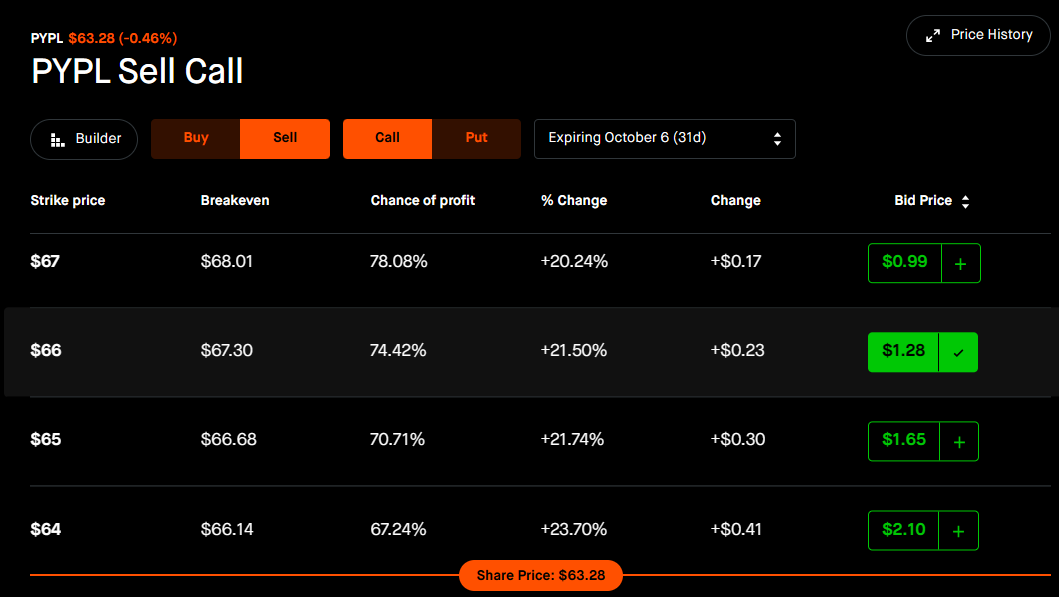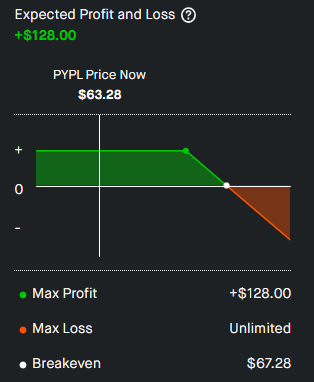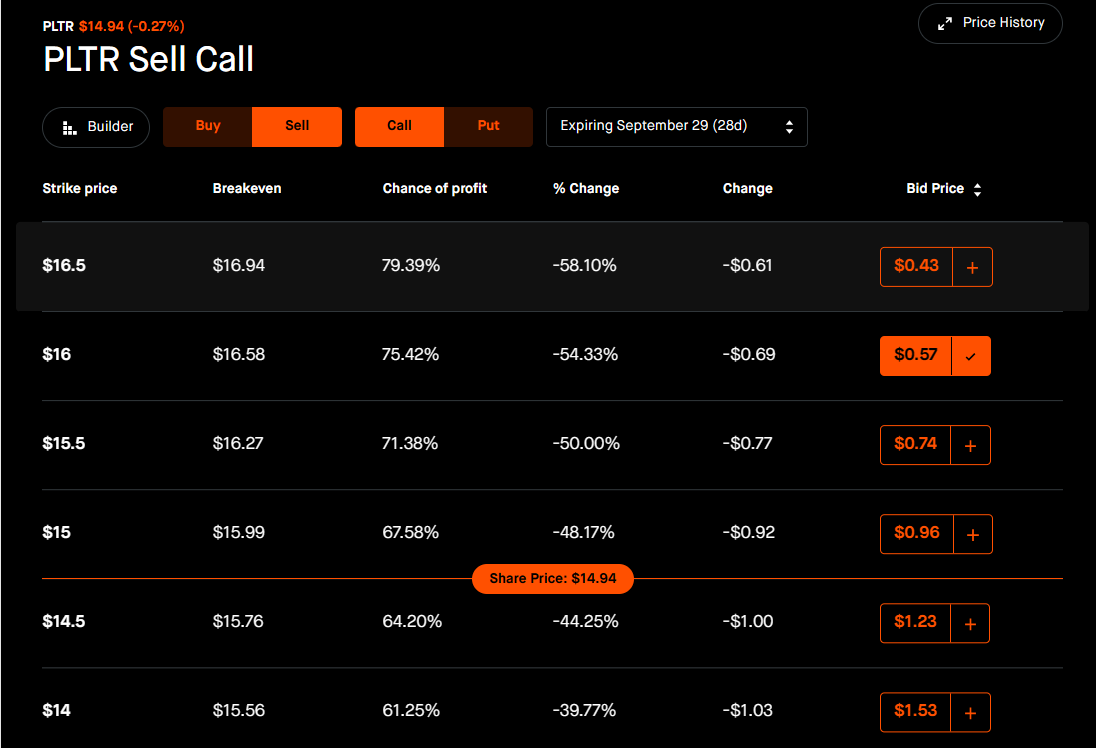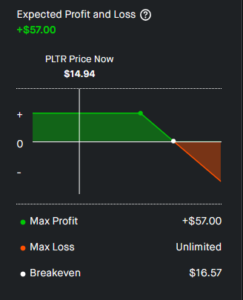Generating Steady Income with Covered Calls
In today’s dynamic financial landscape, investors are constantly seeking innovative strategies to generate income from their investment portfolios. One such strategy that has gained popularity is the use of covered calls. Covered calls offer a unique way to earn consistent income by leveraging your existing stock holdings. This blog post aims to provide a comprehensive guide to using covered calls to generate income, offering insights into the concept, benefits, risks, and practical implementation.
Understanding Covered Calls
The beautiful thing about covered calls is that they are an extension of your investment journey and usually build on top of any pre-existing knowledge you already have about the stock market. What I mean by that is, someone is more likely to find out about covered calls if they are already invested in the stock market rather than getting involved in stocks solely because of covered calls.
Mastering the use of covered calls to generate income, although not easy, is very rewarding and potentially life-changing. It will display your evolution as an investor, which will boost your overall portfolio returns.
Definition and Basics
The building block of covered call writing is stock ownership. You must own at least 100 shares of a particular company, once you do, selling a call option means you are willing to sell your shares at a predetermined price no matter if the stock price goes up or goes down.
Stock Ownership
If you don’t currently own 100 shares of a company, this is where you want to start. Building your portfolio is a slow process, especially if you are on a fixed income. But with some long-term planning, consider that you will be able to make 2%-4% from your portfolio. The bigger the portfolio, the bigger the returns you will see.
Call Options
A covered call is you selling a call option to a call buyer on the other side of the option chain. What this option buyer is hoping for is an increase in the stock price, which would result in the contract they bought being worth more than their purchase price.
Premiums
Your objective from this transaction is for the stock price to stay below your strike because that will mean that your trade was successful, and you got to keep all the premium you were paid for selling the call. For example, if you sell a weekly call option on PayPal at the $62 strike price when the stock is currently trading at $59 per share, you would collect and keep your premium if the stock price stays below $62 at the end of the week.
How Covered Calls Work
Using covered calls to generate income is a great way to increase your portfolio returns in any market environment. This strategy allows you to make your stocks work for you. Many people simply buy stocks and hope that they go up eventually; expanding your knowledge base to include covered calls will increase your returns by 2%-4% a month.
Benefits of Covered Calls
Covered calls and trading options in general are tools available to every investor that allow for income generation and hedging strategies. Investors who are not aware of these strategies usually watch their returns disappear in a market downturn or get forced to panic sell and end up selling too early.
Income Generation: Earn Premiums
In my opinion, once you’ve been able to string together 4-6 weeks of successful trades and premiums collected, this is how you will know you have reached the ability to consistently start using covered calls to generate income. Once you’ve reached that point of predictability, you can start to expand into different strategies with the income, start paying yourself from the income, or start buying more stocks you value.
Risk Mitigation: Downside Protection
Covered calls provide downside protection through the premium you successfully collect after every trade, the way this works is think of the premium you collect as lowering your cost basis. For example, if you bought 100 shares of Palantir stock at $14 which means you paid $1400, if you sold a covered call and collected a premium for the month of $56 which is about 4% your cost basis went from $1400 paid to $1344 or $ $13.44 per share. The numbers start looking even better the more often you do this.
Capital Appreciation Potential
The benefit of using covered calls to generate income is that you are compounding growth in your portfolio with every premium collected. The great thing about this strategy is that you can keep compounding this growth in your portfolio regardless of whether or not your stock returns are outperforming the market.
Risks and Considerations
With every options strategy there are risk and reward outcomes you must consider. This great thing about covered calls is that if the strategy is executed properly, you are not introducing any new risk to your portfolio beyond the risk you would’ve had simply buying and holding the stock.
Limited Upside Potential
This point is an important one, you have to be disciplined when trading covered calls, otherwise you’ll find yourself second guessing yourself every time the stock price goes up.
Opportunity Cost
Conviction in the stocks you build your portfolio around is very important. Stocks are guaranteed to go up and down in the short term, but generally go up over the long term. When the price of your stocks starts to drop, you want to make sure that the stocks you own are worth owning; otherwise, you will be forced to hold on to a losing position for a long period of time and miss out on gains you could’ve had by investing in better stocks.
Even worse, if you find yourself in a panic you might sell a winner at the absolute worst time. Think about those early sellers of Tesla or Nvidia stock.
Market Volatility
When the market is very volatile, you will notice severe price movements in your stock positions. These volatile moments could be opportunities to take advantage of the market and make great gains, or the time to sit on the sidelines and let things cool down. The worst position to be caught in is when a covered call goes against you on a stock you are not ready to get rid of.
Selecting Stocks and Options
Choosing your stock and options strikes are going to be a big determining factor of your success as a trader.
Choosing the Right Stocks
I might’ve mentioned stock selection a couple of times already in this post, but it really is that important. Everyone finds out what their risk tolerance is once their portfolio value starts to decline, and you will discover how high your conviction is in your individual stocks when their value starts to decline by 30% or more. This is why choosing the right stock is important; you want to be so confident in your picks that a price decline just looks like a buying opportunity.
Evaluating Option Contracts
The evaluation process of any option contract should be focused on a couple of things. You want to make sure that the option has a lot of open interest, which is going to be great for liquidity when you need to exit the trade. Plus, you will not lose money on the bid and ask spread on your entry and your exit.
Setting Strike Prices and Expiration Dates
Choosing your strike price should be based on what you’re hoping to achieve on your monthly returns. If you are hoping for a 2% return in a month, you would choose the strike price that corresponds to the premium you’d like to collect. Whether your trades are weekly or monthly depends on your schedule and how active of a trader you’d like to be. Monthly trades require less position management and are usually ideal for anyone who trades while working a full-time job.
Implementing Covered Calls
Once you are ready to start using covered calls to generate income, make sure to always start your trades with a lot of thought and consideration for what your potential losses might be.
What I mean by that is, even when you are up on a position and your covered call gets in the money, unless you are prepared to lose your shares, that would be a situation where you want to buy to close that trade if you are still seeing a lot of upside in your stock position.
Step-by-Step Guide
This example below is a quick example of what a trade looks like on my brokerage account. Everyone has their brokerage of choice; I like Robinhood because they really have a user-friendly interface.
- Identify the stock you want to own
As of this writing I am long a lot of fintech stocks, Paypal is stock I currently own because it’s been really beat down over the last couple years and the risk reward on the investment seems worth it, the financials for the company also looks pretty good. - Determine the length (weekly, monthly) of your trades
With my full-time work schedule I am currently using covered calls to generate income monthly, I find it’s a lot easier to manage monthly trades.

- Calculate your returns
This monthly return on PayPal is about a 2% return
,
- Calculating Potential Returns
The more and more you trade for yourself you will figure out what returns you’d like to receive on a weekly or monthly basis. From what I’ve seen from experience, my consistent returns come when I target returns of 1%-4% per month.
- Real-world Example
the example below shows what a covered call trade on Palantir stock would look like. The time frame on this trade is 30-day trade. If the trade is successful, we earn 4% or $57.


Advanced Strategies and Techniques
As you gain more experience through your trades and experience the inconsistencies of profitable and losing trades, you will realize that the covered call strategy and the likelihood of success mostly has to do with position management.
Rolling Covered Calls
There are typically two main reasons to roll your covered call positions: first, to lock in profits early if the expiration date is still far away; second, to manage your risk when your call position is in the money. When your call is in the money, the main goal now becomes to minimize your losses.
A great way to do this is by rolling your position which starts by closing your initial trade while simultaneously opening a new trade on the same stock for a later timeframe at a higher strike price to increase the chance of profit and hopefully breakeven on the overall trade.
Collar Strategy: Adding Protection
Adding protection, also known as hedging, is a tough concept to master as an option trader because it requires you to be both bullish and bearish. The way to initiate a collar strategy is by opening a covered position on one of your stocks and buying a put option on the same stock.
What this trade does is protect your stock from a big price drop with the put you purchased. For example, if your cost basis on PayPal stock is $63, you might want to give yourself a 10% downside protection by buying a put option at the $57 strike price.
.
You could be bullish on a stock position because it is currently undervalued, but you might start noticing that the market is in a short-term downtrend, purchasing a put would be the way to protect and maybe even profit from a down market.
Tax Implications
As an active option trader, you will find yourself paying short-term capital gains tax on your trades. Paying taxes is a great sign of success because it means that you are becoming a profitable trader. It’s never fun paying taxes, but that is just a part of the trade. If you are trading for retirement and are not in need of the money right away, a great strategy you can implement is trading options in a tax-advantaged retirement account like an IRA or a Roth IRA. This is a great way to trade without worrying about paying taxes on your profits in the short term.
Monitoring and Managing Your Positions
Learning to manage your trades will help you go a long way in becoming a successful options trader. When you sell options like a covered call, your position will go from being profitable to unprofitable as quickly as the stock prices movements. This is the perfect reason to have a strategy based on position management and rules in place on when to take profits. This will help you keep your emotions in check and simply follow your trading plan.
Regular Portfolio Assessment
Not being too overextended and having a condensed watchlist is one of the best ways to stay on top of opportunities when they present themselves. For example, if you initially opened a position on PayPal, and the stock has been trading sideways for a month or so, and your watchlist indicates that Uber stock has taken quite a dip, if you now feel that Uber is a better position to own because of the price drop, don’t be afraid to reassess your portfolio for the better stock.
When to Roll, Adjust, or Close Positions
We covered rolling as a great risk management strategy, but rolling can also be used when your trade is successful. As part of your trading plan, your success rate as an option trader will increase significantly by having rules in place on when to take profit.
For example, when I trade, if my positions are within the 50%-70% range, I start considering taking profits. This rule is important because in a volatile market, your positions will flip between being profitable and unprofitable very quickly.
Common Mistakes to Avoid
As an options trader, no matter how experienced you are, you will make mistakes here and there. The key to your continued success will be to learn from those mistakes to become a better trader.
The stock market is very unpredictable. The best you can do is make trades that have a high probability of success.
Overlooking Market Research
Staying connected to what is going on in the financial markets and global politics is an essential part of your success. For example, not knowing that inflation is rising and that the Federal Reserve is hiking interest rates to actively reduce inflation would limit your chances of success since you don’t have the full picture.
Ignoring Diversification
Keeping yourself well diversified is key to surviving as an options trader. It’s really tempting to want to put all your funds into one trade when the returns look attractive enough, but taking the less risky approach will make it more likely that your account returns won’t be destroyed by one bad trade.
Failing to Plan for All Scenarios
Black Swan-type events are the unpredictable scenarios you want to plan for as an option trader. Consider what your portfolio would look like if you were too concentrated during the scare of March 2020 when the whole stock market crashed to an extreme level due to a lot of fear and uncertainty. Granted, if you were selling covered calls, you would’ve made money, but having a great risk-defined strategy is always best.
The goal is to make the returns, but also not give them back with one bad trade.
Covered calls can be a powerful tool in your toolkit, providing an avenue to generate regular income while maintaining a certain level of risk control. Consider that most people, if they ever get started investing at all, simply just buy and hold stocks and hope for the best. I’ve learned the hard way that the market is very unpredictable and using covered calls to generate income is a great way to benefit from down markets and allow your portfolio to grow in any environment.
With any investment strategy, it’s important to understand the mechanics, benefits, and risks before jumping in. I hope by following some of the details outlined in this post, as investors you can harness the potential of covered calls to enhance your portfolio’s income stream and potentially achieve all your financial goals. Remember, becoming successful at trading requires ongoing education, careful planning, and adapting to the ever-changing market conditions.